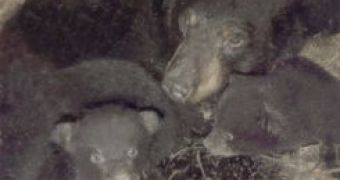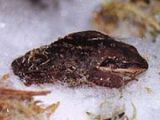When the days shorten and the sun's power is getting increasingly weaker, animals get restless. They all prepare for winter.
Most invertebrates (worms, mollusks, insects, and fishes) pass into a lethargy stage. But before that, they look for a proper shelter. Earth worms dig for deeper galleries in the soil, clams bury themselves into the mud, the fishes retreat to the bottom of large waters, most insects gather in colonies under death leaves, moss, tree bark and so on.
But before that, they store body reserves. Fat reserves of the flies or mosquitoes can be 28 % of their bodyweight.
Various animals living in pools, visible or invisible, can freeze during winter just to return to normal in the spring. Frogs do it!
In an ice piece from a pool, 177 frozen species started moving once the ice melted.
Scientists found that even birds can hibernate. Some species, like swallows, martins or nightjars, when the temperatures are too low during the summer can pass into a lethargy stage which can last 9 to 13 days.
They gather in small flocks between rocks and stay still, without feeding, and their body temperature drops from 39? C to 18? C. Some hummingbirds living in the Andes pass through this stage daily. Here, temperature can drop to -7? C during the night, that's why they feed during the day and at night, they spend 10-15 hours in lethargy.
One nightjar, the common poorwill (Phalaenoptilus nuttali) from western North America, is the only bird that hibernates, concealed in piles of rocks.
Amongst mammals, the most well known hibernants are the hedgehogs, bats, rodents (like marmots, dormice, hamsters, ground squirrels). The mole, after achieving a body fat reserve, digs a deeper gallery where it sleeps.
Marmots deepen their burrows at the bottom of which they hibernate.
Hedgehogs hibernate under a layer of dead leaves and moss, under the roots of some tree.
Bats gather in colonies usually in wet caves, as their wings lose a lot of water and otherwise they would get dehydrated during winter.
Hibernation is a complex phenomenon. It is triggered when temperatures drop to 1.5-10?C and the animal wakes up usually at 15?C.
The animals' bodies pass through a series of physiological changes.
From 37?C, the body's temperature drops sharply, being with 0.5-3?C higher than that found in the shelter. The metabolism decreases by 10-100 times.
In hedgehogs, the respiratory rhythm drops from 40-50 breaths/minute to only 6-8 and sometimes the respiration can totally stop for 5-10 minutes. The heart rhythm drops from 230 beats/minute to only 24 and the arterial tension decreases 5-20 times.
The blood gets richer in carbon dioxide and poorer in glucose. All these modifications are determined by the activity of the endocrine glands (pituitary, adrenal glands, and thyroid).
Hibernation lasts about five months, varying depending on the individual, weather, and species. Many say wrongly that bears, badgers or skunks hibernate. They actually doze.
In their dens, bears alternate doziness with alertness when they will feel some intruder. They do not drink nor eat all this time, but their body temperature does not drop drastically, nor do the respiration or heart rhythm. Thus, contrary to popular belief, you cannot approach safely to a wintering bear.
Badgers line their den with moss and dead leaves and even store foods, for a snake from time to time while they wake up from their doze.

 14 DAY TRIAL //
14 DAY TRIAL // 
